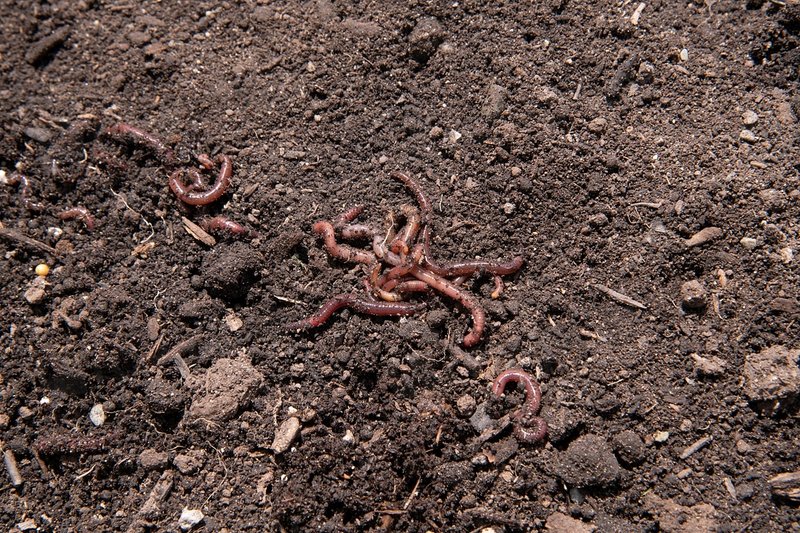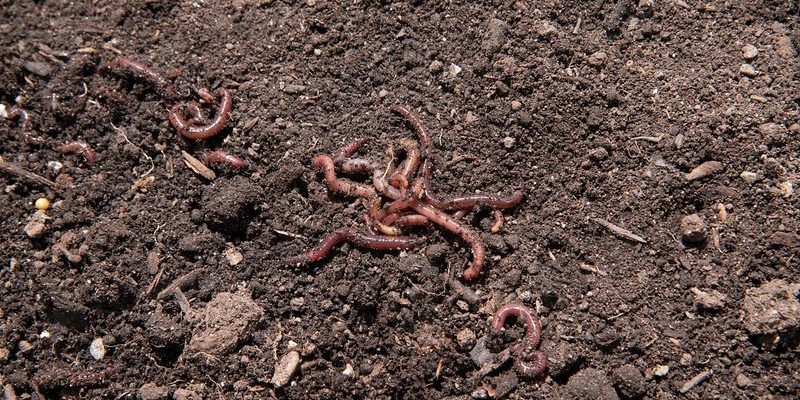
Imagine you’re throwing a party, and your guests are picky about where they sit. Earthworms are no different; they have specific preferences about where they’d like to wiggle around. They thrive in environments that provide the right mix of moisture, food, and structure. So, let’s dig deeper into what makes the best soil for these tiny champions!
Understanding Earthworm Preferences
Earthworms are surprisingly picky. Their ideal habitat needs to check several boxes. First, they prefer **moisture-rich soil** that helps them breathe and absorb nutrients. Think of it this way: just like you wouldn’t want to lounge on a dry, cracked beach, earthworms also need a damp environment to stay healthy.
Moreover, they like a **neutral pH** range—typically between 6.0 and 7.5. This is crucial because soil that’s too acidic or too alkaline can really affect their health and activity. Remember, earthworms don’t have lungs; they breathe through their skin! So, the moisture in the soil is essential for that process.
Another important aspect is the organic matter in the soil. Without food, worms can’t thrive. They feast on decomposing leaves, plant material, and even organic waste. You might be wondering what happens if these conditions aren’t met. In such cases, the worm population can decline, and the overall health of your garden can suffer.
Soil Texture: The Perfect Blend
You might think that all soil is created equal, but that’s not the case. The texture of the soil is incredibly important for earthworms. They generally favor a **loamy soil**—a mix of sand, silt, and clay. This kind of soil offers excellent drainage while retaining enough moisture for the worms.
Here’s the thing: too much clay can lead to compacted soil, making it hard for worms to move around. On the flip side, sandy soil drains too quickly and doesn’t hold moisture well. The ideal loamy soil feels soft and crumbly, allowing worms to burrow easily while also providing them the moisture they need.
To ensure you have the right soil texture, consider conducting a simple soil test. A quick mix of soil and water in a jar can give you an idea of your soil’s composition. This way, you can adjust it to create the perfect home for those beloved earthworms!
Moisture Levels: Finding the Sweet Spot
Moisture is a big deal for earthworms. They love it but not too much! Too little moisture means they can dry out, while too much can drown them. Ideally, the soil should be like a well-wrung sponge: damp, but not soaking.
One way to maintain this delicate balance is through regular watering, especially during dry spells. Mulching can also be your best friend. Adding a layer of organic material can help maintain moisture and create a comfortable microclimate for your soil.
Another aspect of moisture levels is drainage. If your garden tends to pool water after a rain, consider improving drainage. This could mean adding organic matter or using raised beds. Remember, healthy earthworm populations thrive in moisture-rich yet well-drained soils!
Food Sources: Feeding the Worms
Just like us, earthworms need a balanced diet. They thrive on organic matter, which includes decomposed plant material, leaves, and even kitchen scraps. Adding compost to your garden not only enriches the soil but also provides a buffet for your worms.
Interestingly, earthworms are known to process about half their body weight in organic matter daily. This means that a single, healthy earthworm can significantly impact the soil quality. A great way to keep them well-fed is to keep your garden littered with organic waste—think of it as an all-you-can-eat buffet for them.
You might be surprised to learn that some things can be harmful to earthworms. For instance, large amounts of citrus peels or overly salty foods can be detrimental. So, when adding food scraps to your compost, try to keep it varied and balanced.
Soil pH: Striking the Right Balance
As I mentioned earlier, earthworms thrive in a neutral pH range of 6.0 to 7.5. If the soil becomes too acidic or alkaline, it can stress out the worms and reduce their population. It’s like trying to enjoy a concert with terrible acoustics – you just can’t get into it!
You can test your soil’s pH easily with home kits available at garden centers. If you find that your soil is too acidic, some lime can help balance it out. Conversely, if it’s too alkaline, you might want to incorporate sulfur or organic matter.
A balanced pH not only supports earthworms but also makes nutrients available to your plants. Think of it like a good party where everyone feels comfortable and has a chance to mingle.
Compaction and Aeration: Room to Breathe
Soil compaction is one of the biggest enemies of earthworms. If the soil becomes too compacted, it creates barriers for worms to move through, reducing their activity and even causing stress. Earthworms need space to wiggle around and aerate the soil.
To prevent compaction, consider avoiding heavy machinery on your garden beds. Instead, use lightweight tools and practice no-till gardening. You can also use cover crops to help break up compacted soil naturally.
Adding organic matter is another great way to improve soil aeration. Things like leaves, straw, or even worm castings can create air pockets, allowing earthworms and other beneficial soil organisms to thrive. It’s like giving them their own little highways to travel on!
Monitoring and Maintenance: Keeping It Worm-Friendly
Creating and maintaining the best soil conditions for earthworms isn’t just a one-time task; it’s an ongoing journey. Regularly check on your soil’s moisture levels, texture, and pH, and make any necessary adjustments. Think of it like a relationship — it takes some effort to keep it healthy!
You could also consider starting a worm bin if you’re really into vermiculture. This allows you to produce natural fertilizer while ensuring that your earthworms are well-fed and comfortable. Plus, it’s a great way to recycle kitchen scraps while contributing to your soil’s health.
In conclusion, providing earthworms with the best soil conditions is a win-win situation for your garden. By ensuring the right balance of moisture, texture, food, pH, and aeration, you can create an environment where earthworms thrive. Their presence will improve soil quality, promote plant health, and contribute to a robust ecosystem.
So go ahead and roll up those sleeves; give those worms a home they deserve! Happy gardening!

